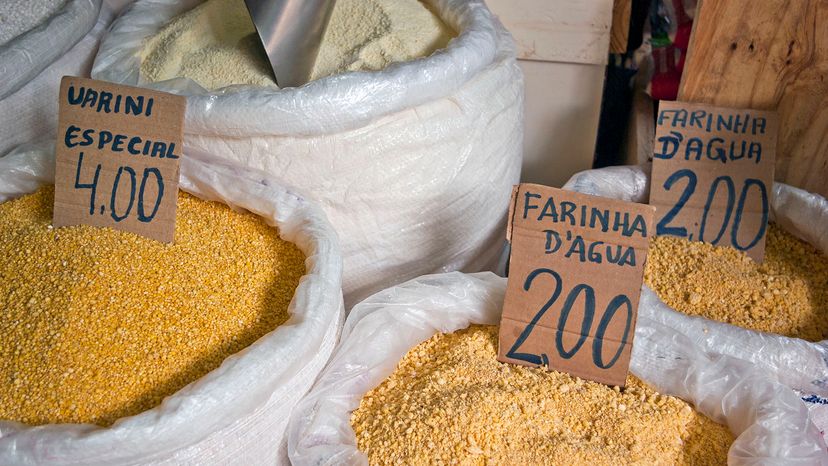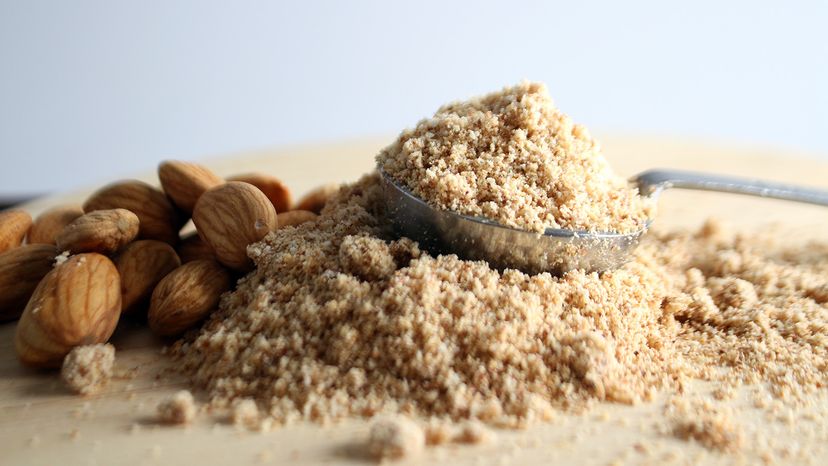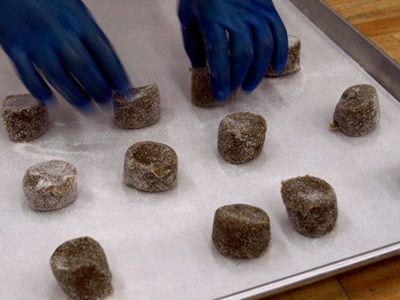If you're ready to start your culinary journey into cooking and baking with non-wheat flours, we'll discuss five different types below, including flavor notes you should keep in mind.
Almond flour, sometimes known as almond meal, is made with blanched almonds. Luaces explains that due to the distinct almond flavor, this non-wheat flour should only be used in almond-based cakes, tortes and muffins. Avoid using it as a one-to-one substitution, though, Luaces warns, as "the almond flour fat and moisture content will make your goods dense, heavy and gluey."
Moore also adds that using almond flour can give you a boost of protein, plus fiber, calcium, vitamin E and magnesium.
Cassava flour is derived from the South American yucca root and is prevalent in Brazilian cuisine as a key ingredient in stews. Luaces uses cassava flour, which she says is the most "wheat-like flour," in her bakery. She suggests only using the one-to-one ratio to make dense yet moist bread, but otherwise, it should be used in a blend.
Aside from bread, you can use cassava flour to make tortillas, naan bread, cookies and pancakes. It's naturally gluten-free. It has a mild flavor with a subtle texture that it's easy to mix with other flours, Moore says.
Buckwheat flour has a very distinct tart and sour flavor, says Luaces, that can be polarizing. The earthy grain will turn any baked good dark gray, so keep that in mind. The darker the flour, the more nutrients, but also the stronger the taste.
Buckwheat flour is good for making pancakes and other baked goods like pie crusts. More importantly, you can also use it to make soba. "Many people are surprised to learn that buckwheat is not actually a grain but technically a seed," Moore explains.
Luaces says she uses two types of white rice flour in her bakery blends — white rice and sweet white rice — as they have distinct flavors and uses. "Sweet white rice is way starchier and stretchier and used in things like mochi," she says. But it's also good for thickening sauces in Asian dishes. White rice flour has the benefit of being flavorless, so its uses are endless; you can deep-fry food by using it as breading, for example.
Sorghum flour is made from sorghum grain, which is high in antioxidants. Researchers discovered that when policosanols — the long-chained alcohols lipids from sorghum kernel wax — are consumed they may be as effective as statins at lowering cholesterol and cardiovascular disease. The flour has a light color, texture and a mildly sweet flavor that works well with other non-wheat blends to make flatbreads, baked goods and roti bread.
Excited to try your hand at non-wheat flour baking? Start with this easy almond pound cake made with almond flour.


